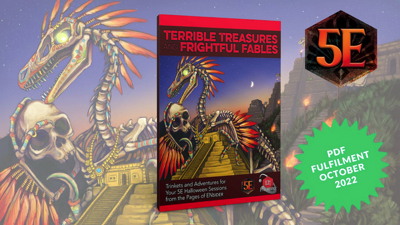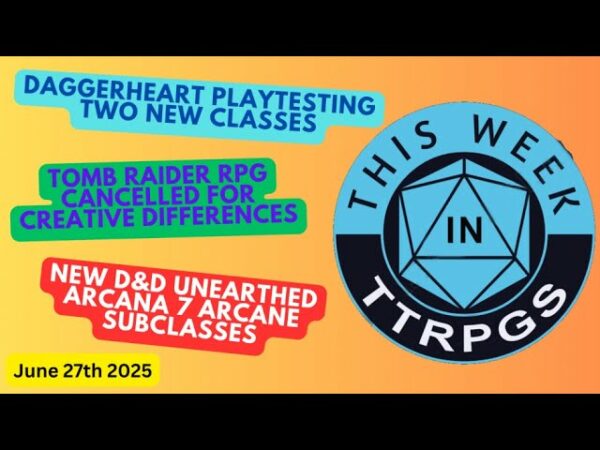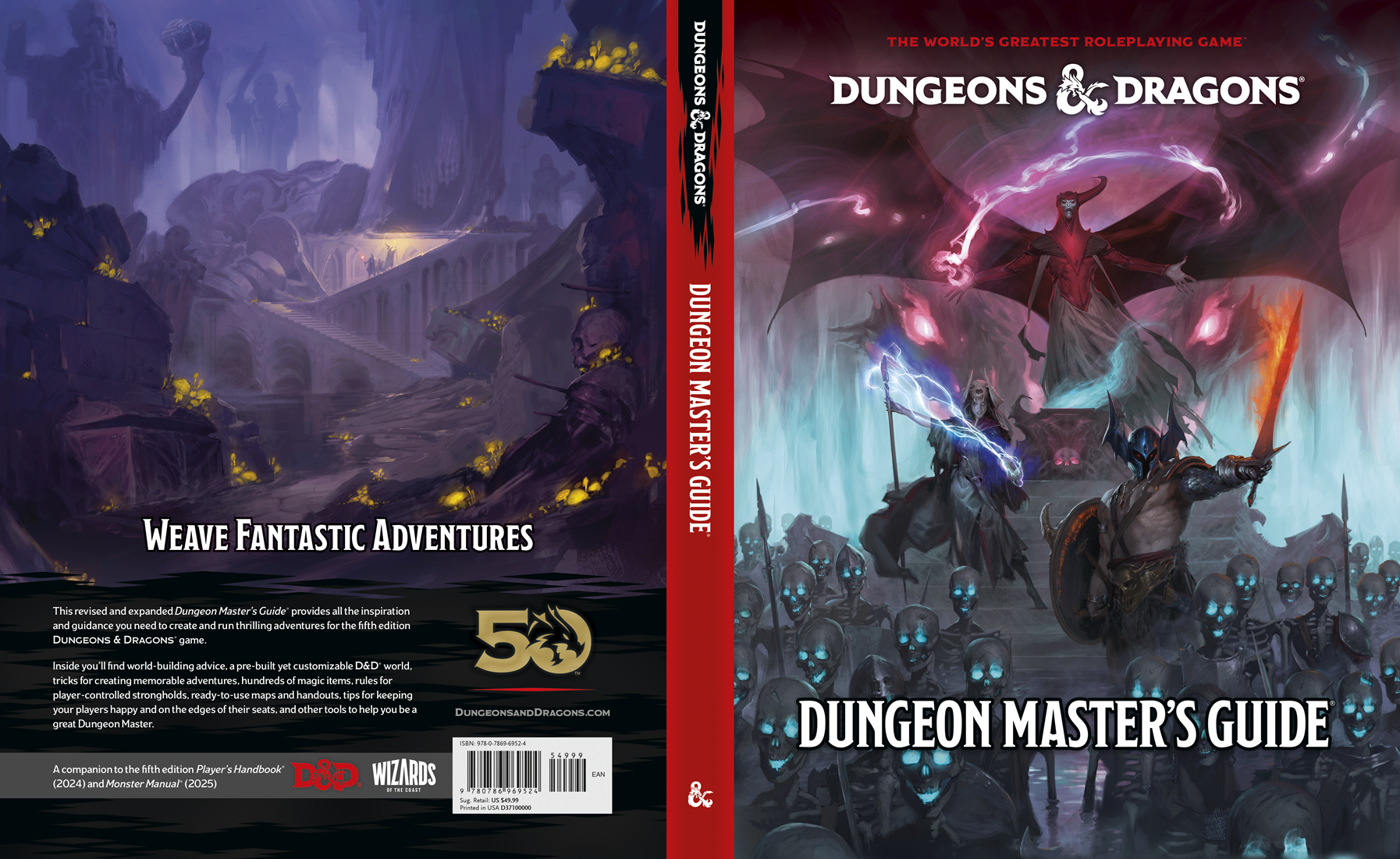
When the 2024 versions of the core D&D trilogy were announced, Creative Director Chris Perkins said that he planned to tear apart the Dungeon Master’s Guide and reassemble it in a way that’s more user friendly for both experienced and new DMs. I can’t comment as to whether Perkins succeeded or not until I get a copy of the new DMG, but at a recent press briefing with Perkins and Principal Game Designer James Wyatt the previews do indicate that a lot of thought went into that goal.

The New DMG’s Design Goal
One of the key things Perkins also wanted to demonstrate in the new DMG is that creating an adventure for home use doesn’t have to be a ton of work. They also tightened up combat encounter creation to assist with that goal.
Perkins and Wyatt wanted to emphasize that point and present a time-saving approach as to how to DM. So the new DMG has five sample adventures, ranging from a half page to one page, to act as a model for how you can plan a full evening of entertainment in a compact amount of space.
Combined with that, one of the philosophical goals was to not just tell DMs what to do but also to show them what an adventure looks like on the page, see how easy it can be to put together their own adventures, etc. Sure, you can spend as much time prepping an adventure as you want, but they wanted to make the process less daunting for DMs. With the information provided, a DM can prep a one-shot adventure in an hour or two with everything on a single sheet of paper.
From there, Perkins and Wyatt promise that the new DMG explains how to tie several one-shots together to create a full campaign. They cited using TV seasons or comic book arcs to help readers grasp the scale of larger adventure arcs.
Wyatt and Perkins also note that players have a hand in the campaign as well and the shape and form it takes. Players can be creative forces in a campaign as well, a point that not just explained early on, but also emphasized in a later section on strongholds.
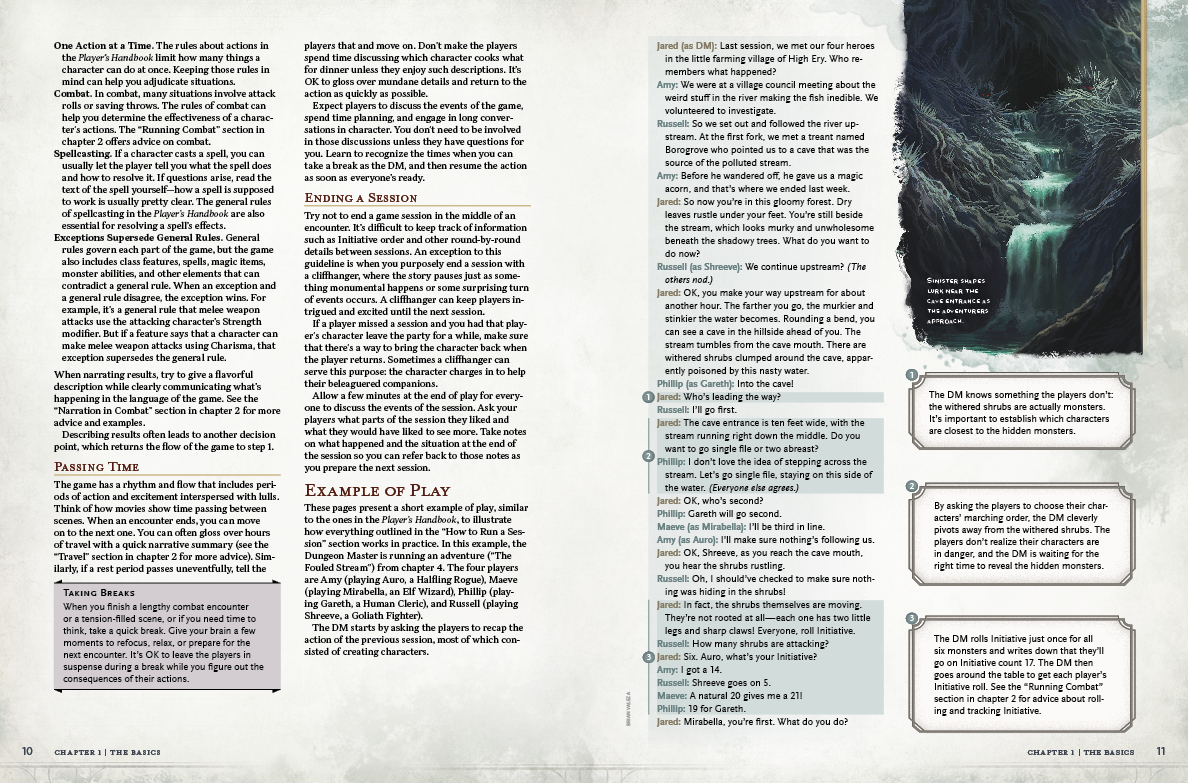
The Philosophy Behind Game Play
One of the questions I asked at the press briefing – because this has been a potential argument before there were internet arguments – was about the design philosophy behind this DMG. Should DMs stick to the rules as written (a.k.a. RAW) or do DMs have leeway for interpretation? And does the new DMG specify the approach it takes?
Perkins said that, “You have license as a DM to say, ‘we’re not going to follow this rule’” as the prelude for a more complete answer.
“The guiding principle is that you have a group of players that aren’t like anyone else so you as a group get to decide, what version of D&D do you want to play. Then the DMG says, once you have that answer, how do you weave it into a narrative that is successful?”
Wyatt added that communication is key so you’re setting the right expectations for your group. Lay that groundwork first to be sure everyone is on board with the type of campaign you’re going to run and what’s expected.
That’s basically recommending a session zero without actually using the term.
“If you’re having fun, you’re playing D&D right,” Perkins added.
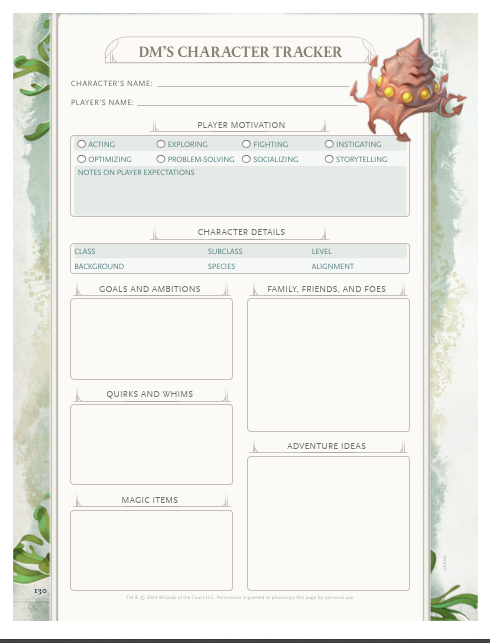
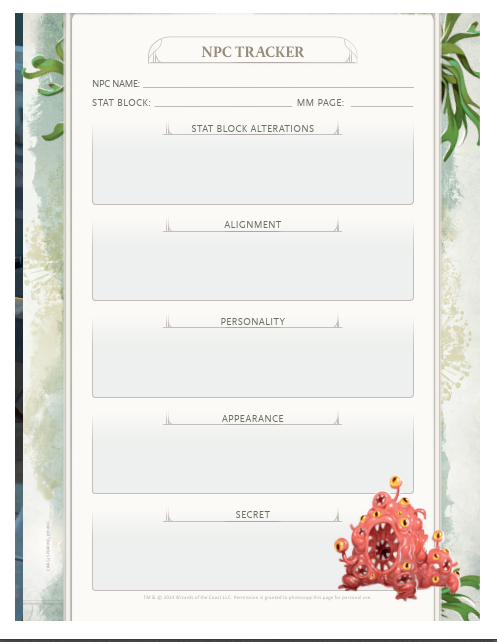
Getting Started
The 2024 DMG is front loaded with all of the basic material DMs need to get their campaigns off the ground and make the game as fun as possible before moving into the “nitty gritty” of how to run a game. As such, the first chapter includes:
- What Does a DM Do?
- Things You Need
- Preparing a Session
- How to Run a Session
- Every DM Is Unique
- Ensuring Fun for All
Chapter 2 builds upon that, with subsections on meeting player tastes, group sizes, multiple DMs, resolving action, character advancement, and running the three pillars of D&D – social interaction, exploration, and combat. The 2024 DMG also includes plenty of tried-and-true advice for DMs.
How did they make sure it was well-tested advice? By running it past notable DMs for feedback, which means not just in-house DMs like Perkins, but also Matt Mercer, Deborah Ann Woll, and others to confirm that the advice was actually useful. Perkins and Wyatt were also quick to note that it’s good to learn from others but that every DM is unique.
Perkins is confident that even experienced DMs will find some useful nuggets in those first two chapters – or validation for what they’re already doing. It also includes advice for running games online since more people have been running online since the pandemic.
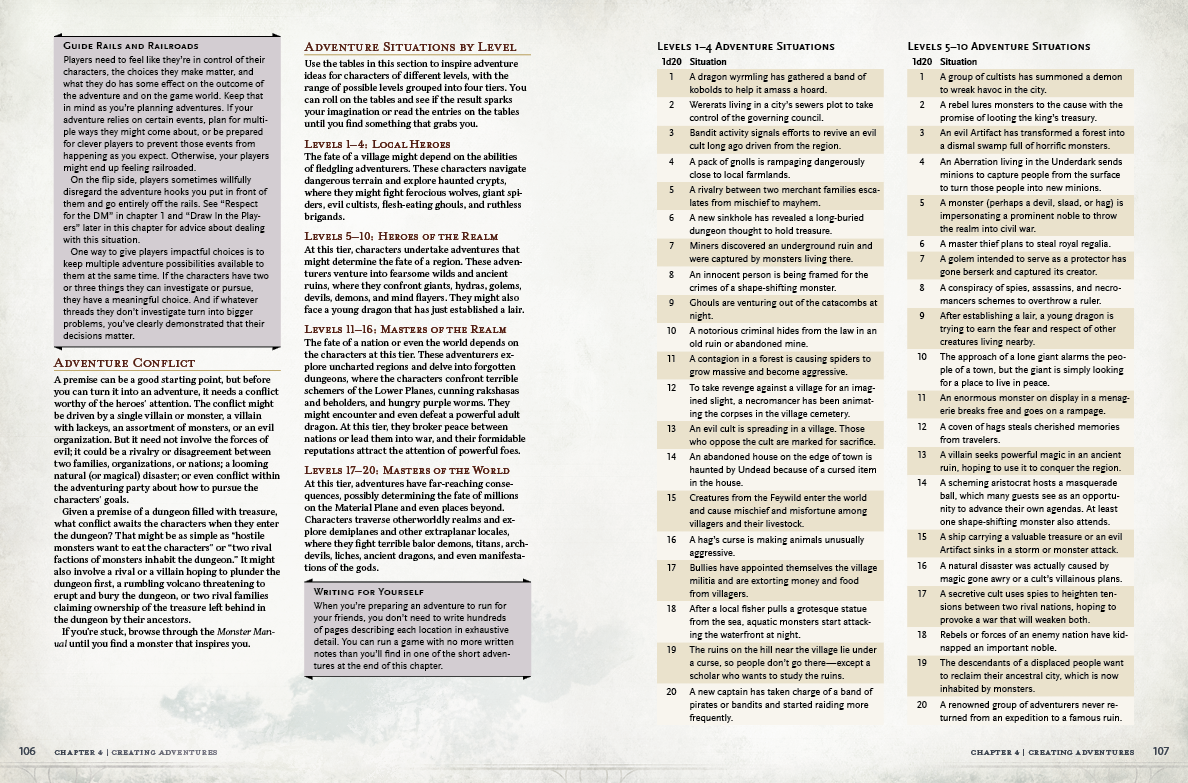
A Toolbox for DMs
Chapter 3 is a catch-all of useful information and additional rules on topics such as alignment, chases, curses and magical contagions, death, doors, dungeons, environmental effects, fear and mental stress, firearms and explosives, gods and other powers, hazards, marks of prestige, mobs, NPCs, poisons, renown, settlements, siege equipment, supernatural gifts, and traps. It also contains information on how to create backgrounds, creatures, magic items, and spells.
And every DMG and DM Toolbox has tables, and this one is no different. Wyatt mentioned his love of tables so he made sure there would lots of “fun little tables” that DMs can use for their session prep, such as making a village, etc.
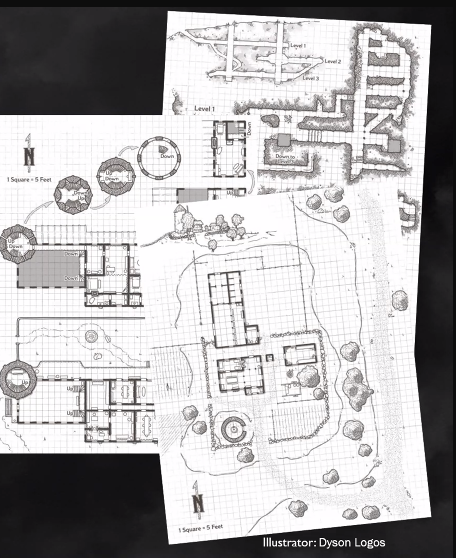
Another aspect of the “toolbox approach” this DMG takes is a collection of generic maps for stock locations in Appendix B. DMs can use these maps over and over again to save time when prepping a session.
The style of these stock maps is very deliberately simple and basic, and printed in black and white to show DMs that they can draw their own maps. Some of the sample adventures in Chapter 4 will also reference the maps and give suggestions as to how to customize and modify them as needed, such as not including a section or not listing a door, to meet their needs without having to create new maps themselves for every session.
The traps section in Chapter 3 also has a selection of options DMs can pick and choose from as needed. Wyatt referred to the traps section as being like “a little Monster Manual of traps.”
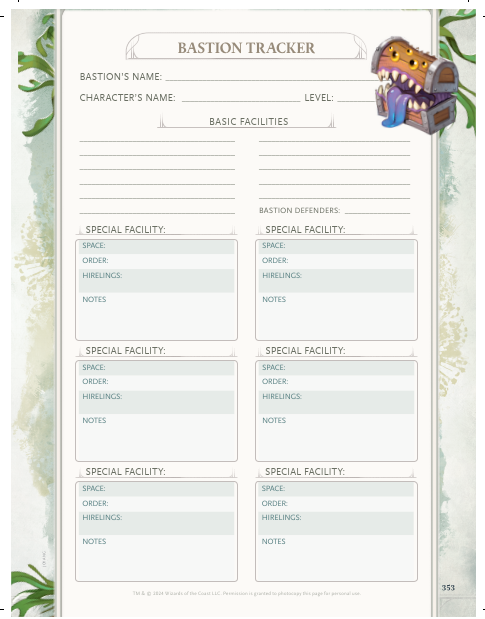

Tracking sheets in the back of the book are another DM helper. These trackers will also be available for free on D&D Beyond. One page each, they help DMs organize NPCs, Bastions, and Magic Items, plus a tracker for PCs (the DMs Character Tracker).
The trackers are designed not only to help DMs stay organized but also to inspire them. What are the major conflicts in your campaign. Record the campaign as it unfolds, and it can help DMs keep track of plot threads and expand on elements players enjoyed.
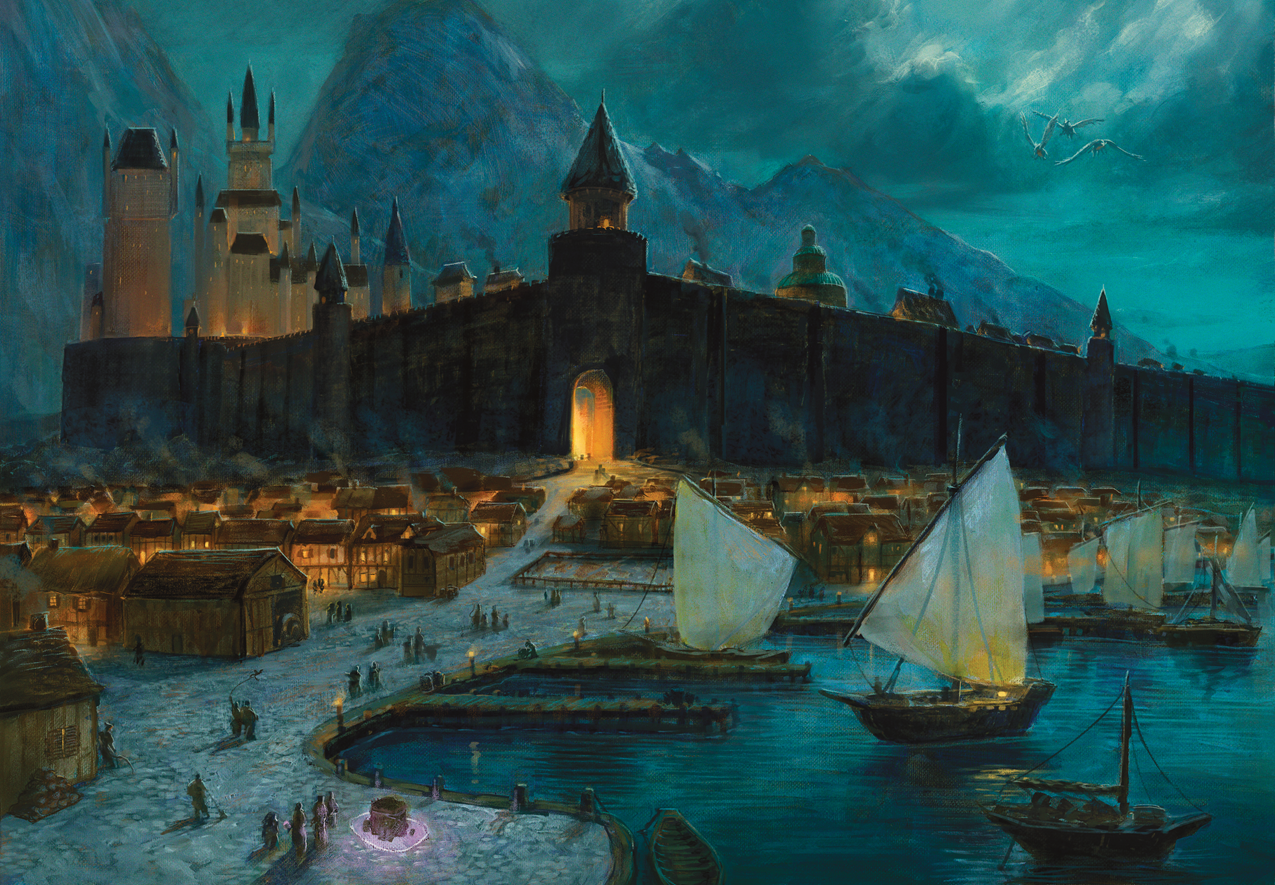
An Adventure First for the DMG
The new DMG marks the first time a campaign setting has been added to the DMG. Why? So they could give specific examples in addition to giving DMs the option to customize the material when using it in their own setting.
The D&D team decided it was a good time to use a setting that has laid fallow for some time. Greyhawk was perfect because it was the first official published setting for D&D. Additionally, it was short, not intimidating, left lots of room for details that the DM could fill in. Greyhawk is a setting that has everything in D&D. After all, everything in the Player’s Handbook and Monster Manual is in Greyhawk and many of the storied characters from D&D’s named spells are from Greyhawk.
Like the Greyhawk setting of old, this is fodder for the DM’s imagination. It also makes Greyhawk the sandbox for new DMs. They can run Greyhawk or Greyhawk-like settings, depending upon how much they adapt it. It also means new DMs won’t have to sift through tons of material to get started.
When asked about whether this meant more Greyhawk material would be coming, Perkins didn’t make promises, saying that they may not come back to Greyhawk for awhile so DMs have room to build on the material and adapt it as they see fit. However, Perkins also said that they’re not so immutable that if fans asked for it and said, “Give us Greyhawk,” that they would ignore it.
The attached poster map in the back of the book also showcases Greyhawk. The map or Oerth (Greyhawk’s world) is on one side and a map of the city of Greyhawk on the other side.
Chapter 4 has five short adventures that both serve as examples for new DMs and can be run as needed. The adventures are for level 1 characters, level 2 characters, level three, level 5, and level 7 characters to provide a range of options and to demonstrate how adventures scale up as the players level.
The adventure chapter is followed by sections on campaigns and D&D’s cosmology. The cosmology hasn’t changed in the 2024 book, but it does add the world tree, which has been there but not always mentioned. Wildspace is included, which it wasn’t in 2014.
The game designers said that the cosmology chapter got a lot more work, and a lot of clever material was crammed in in smart ways. For example, something is referenced in the 2014 books, but the 2014 cosmology never explains what it is, and now it is here.
The 2024 also includes a lot of “nods and winks” to D&D’s history, which is appropriate for a 50th anniversary edition.
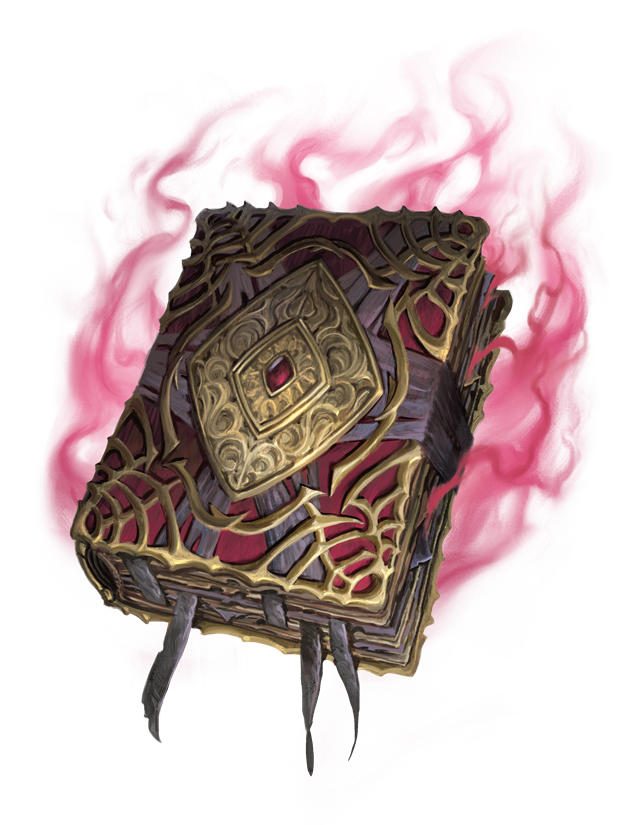
Magic & Treasure
Like the 2014 DMG, the 2024 version has an heft chapter about magic items and treasure. In fact, it’s a big chunk of the new book, getting more than 100 pages of the 384 pages total (larger than the 2014 book). Rarity of items remains unchanged from the 2014 book, but this version has a lot more common magic items.
Appropriate for the 50-year history of D&D, magic items with stories have been added. They also “tightened up” every magic item from 2014 to make them more fun and eliminate any confusion in a description.
And, of course, if none of the magic items in this chapter suit your needs, you can creature your own, using the rules from chapter 3. The only items you can’t create with the crafting rules are artifacts because “they are weird and the methods are lost to time.”
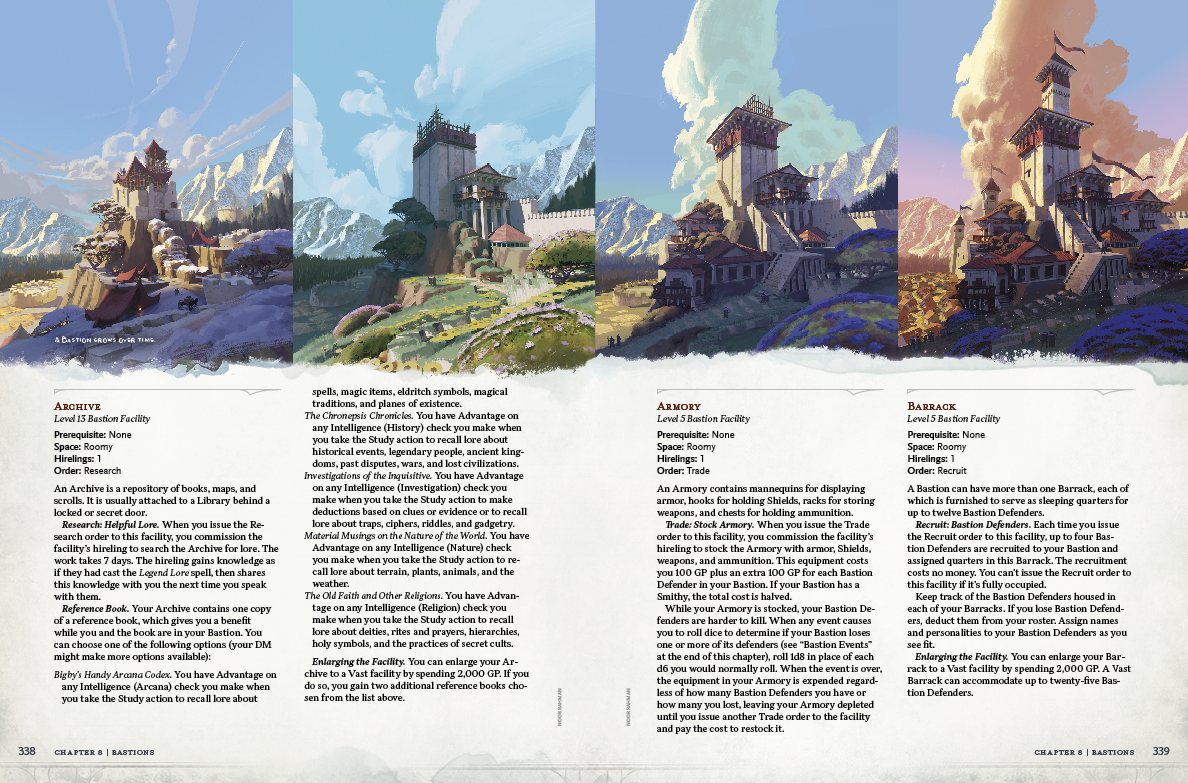
Strongholds Become Bastions
Chapter 8 is all about the types of home bases players can create and a wealth of other information for it. Perkins thought the 50th anniversary was a great excuse to examine the concept and rethink downtime from 2014 and make it more fun.
The guiding principle for revamping this concept was “the player can play an invaluable role in creating content for the campaign.” It basically says, “Hey player, you can take this part of the world and be the guiding force for the microcosm in this part of the world.”
So the player controls the bastion, which has more options than the older option of strongholds. At level 5, a bastion is a home base. It doesn’t have to be a castle. It can be an attic, a structure, etc. Bastions can also be cool facilities such as a pub, guild hall, theater, observatory, etc.
You get some basic facilities for free and as you gain in level, it grows so the bastion is giving you real in-game benefits. Bastions don’t interfere with baseline D&D experience. Bastions can be operational and doing things while you’re away.
Additionally, downtime and the home base work collaboratively together. It provides a way to make downtime more fun.
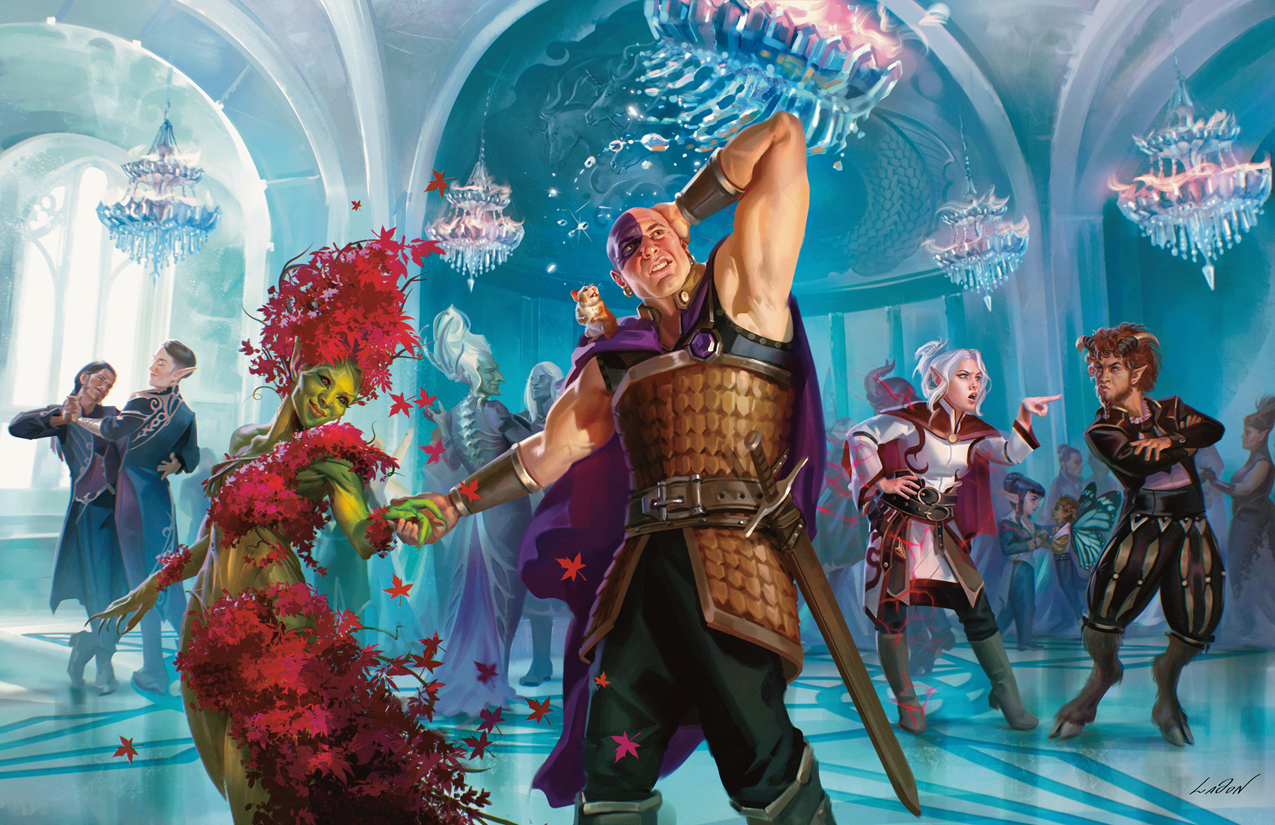
Loads of Lore
Including a “Lore Index” in the appendix is so obvious, it’s hard to believe no earlier DMG had one. D&D has a lot of assumed knowledge so they thought it would be wise to, for the first time, give short descriptions of iconic D&D elements.
One of the ways they checked what might be a necessary addition to the lore index, in addition to making sure that all of the book’s content made sense to newcomers, was to test it with new players. Wyatt’s Gen Z daughters were just a few of many test cases to help them detect what material might not be obvious for new players as opposed to things like veterans like himself take for granted.
However, if a character isn’t described in the lore index, it means they’re covered somewhere else in the DMG. For example, Asmodeus isn’t listed in the lore glossary because he is in the cosmology section.
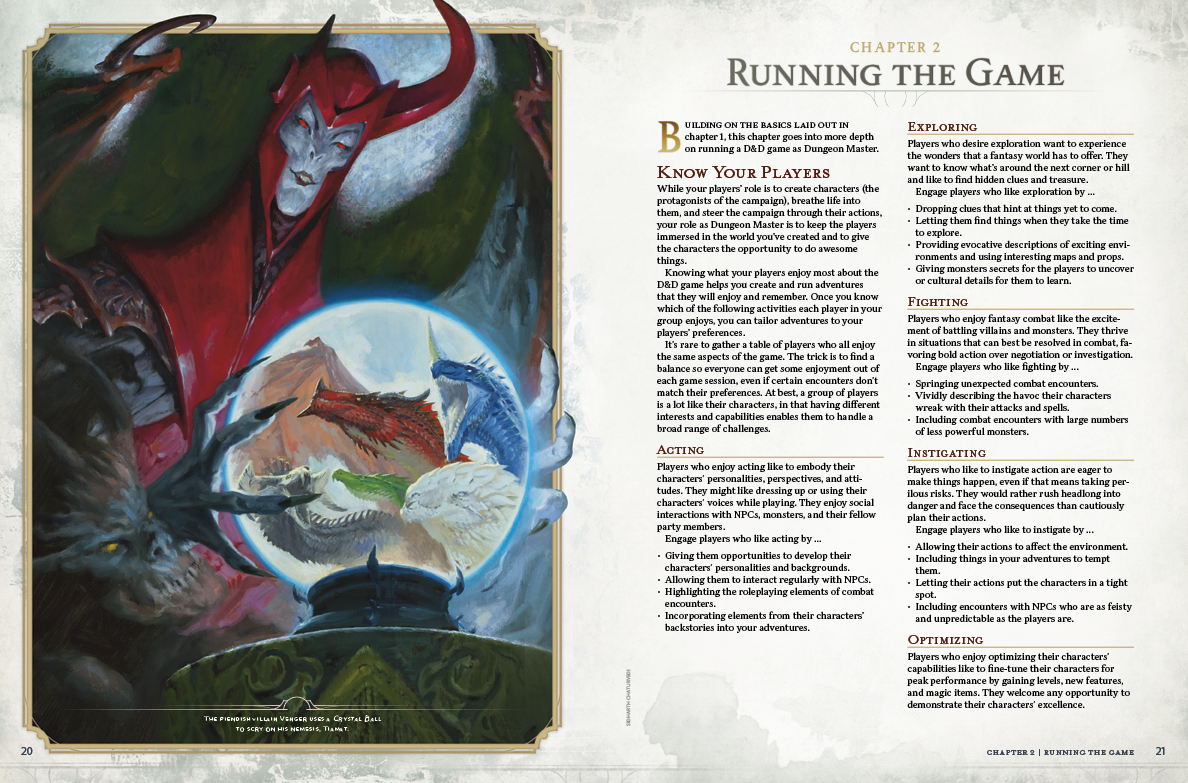
Odds & Ends
Venger from the 1980s Dungeons & Dragons cartoon is featured on the traditional cover. It felt right to the team since he never had been before, and it’s another wink to D&D’s past.
The alternative cover is in shades of gold – appropriate for the golden anniversary of the game, and features Loloth. It’s a reference to the correlation between the webs DMs weave with players to create stories, and the webs Loloth weaves to snare players.
Perkins, Wyatt, and D&D Community Manager LaTia Jacquise also addressed the proverbial $64,000 question about the 2024 books – are they compatable with the 2014 books? All three insisted yes, with Jacquise saying she was currently in a campaign with characters created using both books.
Perkins added that Wizards had never tried do that level of comparability before. He refereed to it as a “guiding north star” for them. They also said the DMG text size is larger so it’s easier to read. I certainly hope that’s true. However, the new book does not have an inspirational reading list like there was in 2014. That’s for two reasons. First, even at 384 pages, something had to get cut.
Reason two actually ties into the first reason in terms of length. The 2014 list l provoked discussion as much to what was there as to what wasn’t. The team decided that today’s list would take a lot more space, and they didn’t want to make assumptions as to what inspires someone so rather than included a very limited list since the more extensive one wasn’t an option, they decided it was a reasonable thing to cut, especially since they do acknowledge that inspiration comes from everywhere – literature, movies, history, reality, and more.
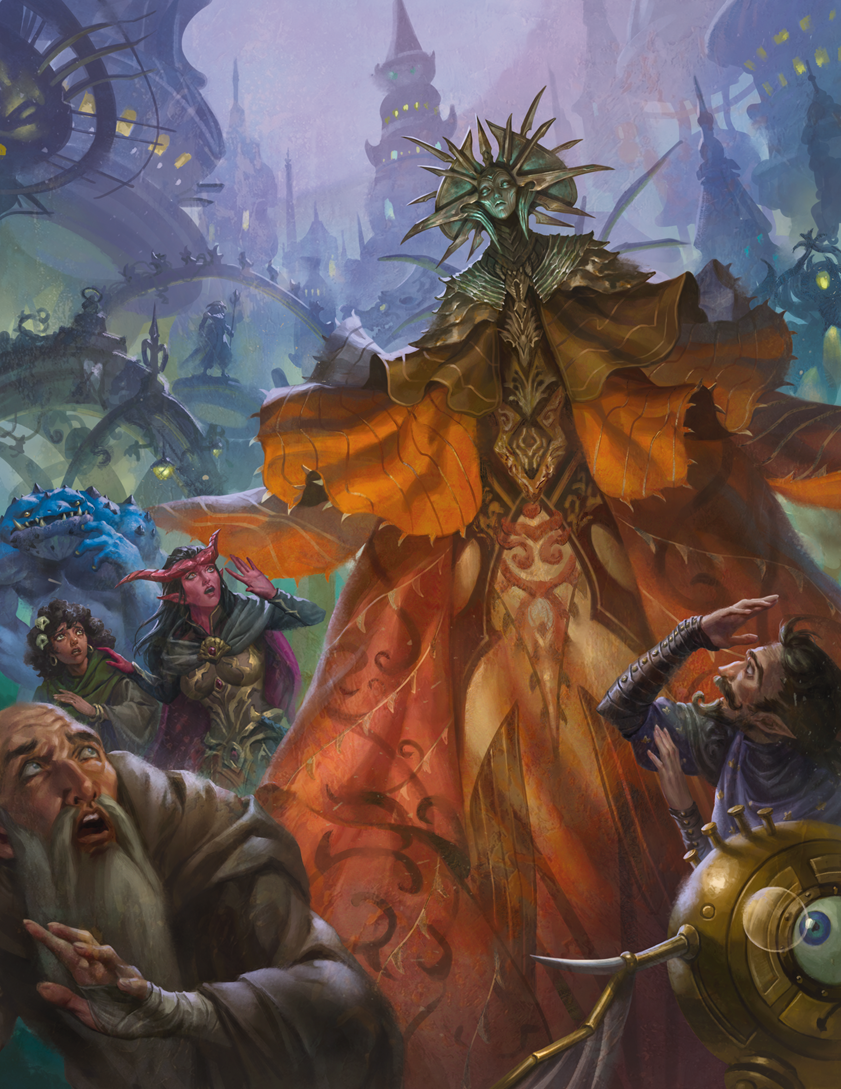
A New DM Screen
The new DMG has a variety of release dates, depending upon what format you purchase, but along with the wide release date of 11/12 comes a new DM screen that doesn’t just have a new cover. It’s been reimagined.
Since they know a lot of DMs are running with a laptop, they designed the screen so that the information DMs use the most are on the far left and far right panels. Less commonly used information is in the center two panels. The art of the 12 classic characters of the game and a red dragon are on the reverse side.
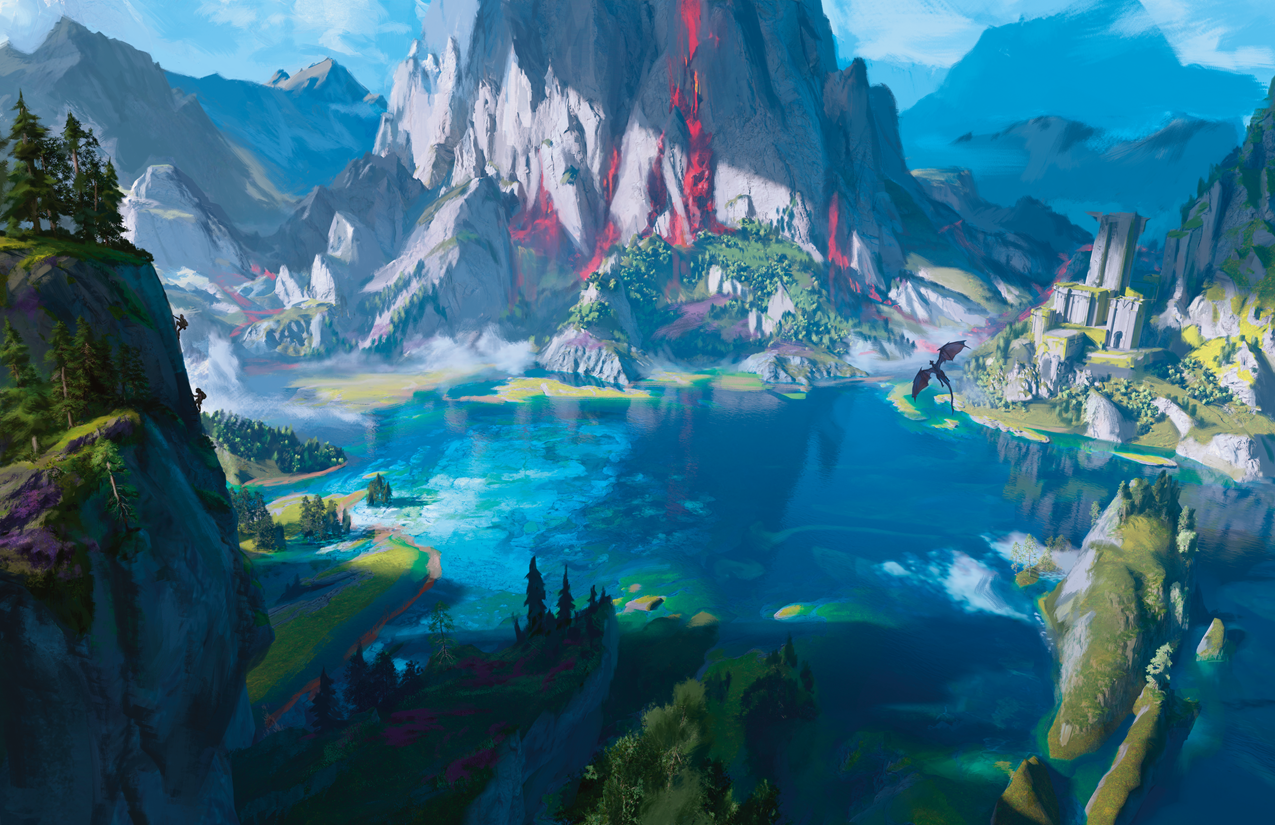
A Mini Adventure
Thematically tied to 50 years of D&D, a short adventure experience will be available at game stores and conventions from Oct. 29 to Nov. 25 to celebrate the new DMG. Scions of Elemental Evil is Greyhawk-themed, centered around, of course, the iconic Temple of Elemental Evil and features the kids from the cartoon leveled up to 4th. It will be on D&D Beyond at some point after it’s been in stores for awhile but no dates yet for that.
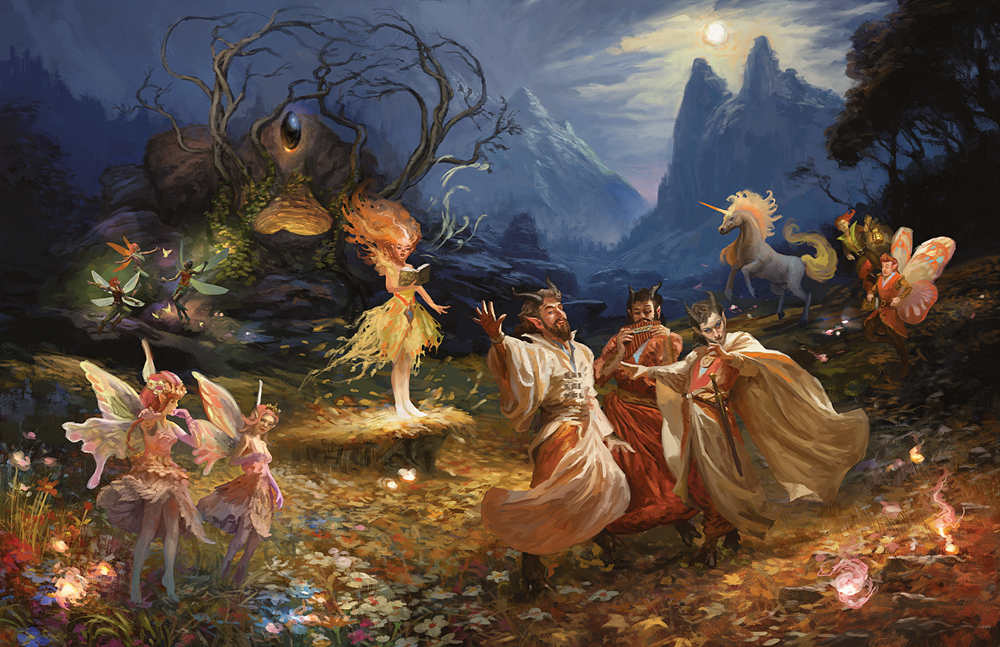
Final Thoughts
As the press briefing was wrapping up, both game designers were asked about their favorite segments. Perkins said that “bastions are super, super fun” and that he’s looking forward to hearing what players are building and see their maps.
Wyatt wrote the gazetteer of the planes and talks about them in a sort of mythic, metaphoric level, with the mirror plane being one of the mind-breaking stories you can tell. He hopes people read that and think of the planes in a whole new way.
D&D Beyond Master Tier and Local Game Store Early Access begins on 10/29. D&D Beyond Hero Tier Early Access is 11/5. Wide release is 11/12.



